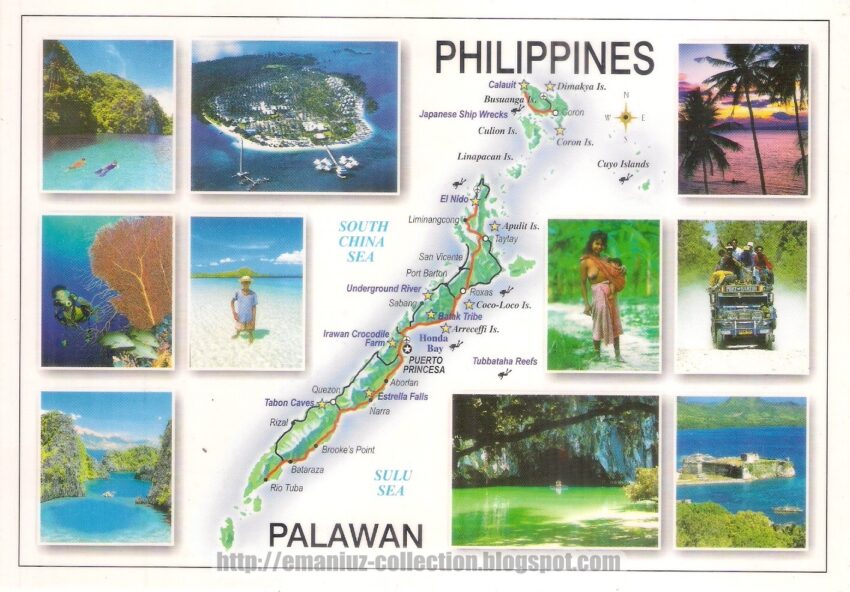
A very particular destination, even within your own country. A unique province in the Philippines, located in the Eurasian tectonic plate, unlike the rest of the islands of the country, found in the Philippine volcanic-tectonic plate. Thanks to the Palawan province’s location, the Bacuit Archipelago has a spectacular landscape that you will not find anywhere in the Philippine archipelago or the world.

To the northwest of the island of Palawan, the Philippine government has created a magical place, incorporating the 45 islands within Bacuit Bay, having a wonderful paradise made of hidden bays, coves, and lagoons. This place is El Nido Protected Area.
In this place you can admire the landscape formed by gray karstic limestone, sculpted by the erosion of more than 250 million years of rain on the upper part, and on the lower part, the sea was responsible for forming holes and ledges, some so extreme that the rock sits on the sea supported only by a narrow stem. These formations seem like dripping wax rather than a rock, resembling a surreal sculpture, and compete with the landscape of the cliffs and jagged ridges.


In El Nido, you can enjoy a wide variety of beaches, however, some of its beaches and lagoons are very well hidden, and you can only reach them by swimming or wading through a narrow gap between tall rocks. But you can also find gaps a little wider than others, in which you can kayak. Once you discover those beautiful hidden places, you will see everything you always wanted from a tropical paradise. You will meet pristine beaches that have a half-moon shape, protected at each end by limestone. You can admire the vegetation hanging from the rocks, the lagoons and the crystal clear waters, so transparent that you can see some sea turtles swimming.

Enjoy swimming or snorkeling for only a few seconds from Bacuit Bay to the secret beach on Matinloc Island; what you will see will amaze you. You will go from swimming in crystalline waters to swim in aquamarine waters, shallow and on a white beach. At the bottom of the sea you will seecorals and at the top, you will find yourself facing the limestones that surround the lagoon. In the end, a virgin rainforest that makes the sand look even crisper.


In Palawan there are 25 species of mammals, 11 of them are endemic, while the others are species that can be found normally on the island of Borneo. It is said that 160,000 years ago, Palawan was connected to Borneo.
The name of the island is due to the fact that the Spaniards when they arrived in Palawan in the 16th century, started calling the are “Paragua”, which means umbrella, because the island had the form of a closed umbrella. However, many people believe that their origins are Chinese and others think they are Indian. The influence of Spain can be admired in colonial buildings, fortresses, and lighthouses. After the Spaniards left in 1898, the United States intervened and established a civil government, which later created the province of Palawan.


Palawan is a well-known place, besides having El Nido, it also has the famous St Paul River closest to the capital, and places like Puerto Princesa, located in the Puerto Princesa Subterranean River National Park, which has a system of 8km caves, with crystalized stalactites and stalagmites. You can navigate its full length in a canoe.

To get to this magical place, you can take a flight to Manila in the Philippines, from there you take a 90-minute flight to Puerto Princesa, the capital of Palawan along with the island Transvoyager. To get to El Nido just board a boat from Puerto Princesa, they are only 45 minutes away.

If you loved this article or found it useful, don’t forget to share it with your adventurous and travel-hacking friends! If you want more post like this, follow us on Youtube, Instagram, Pinterest, Twitter or Facebook and subscribe to our newsletter!

